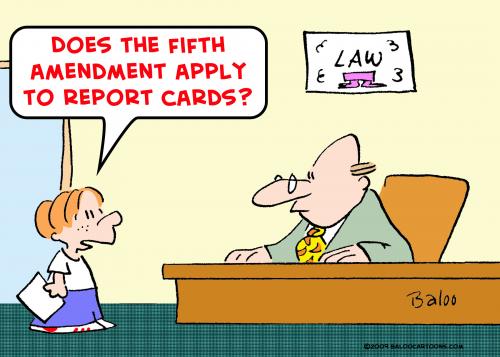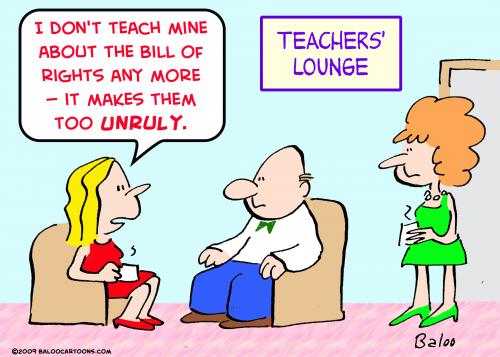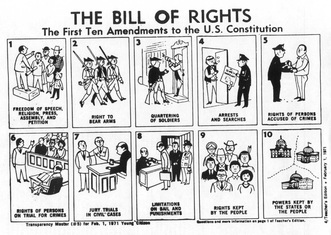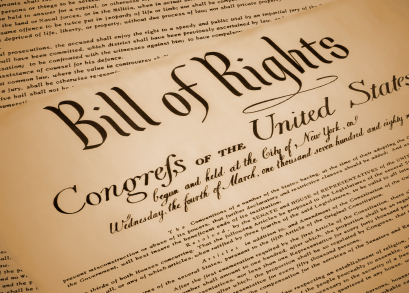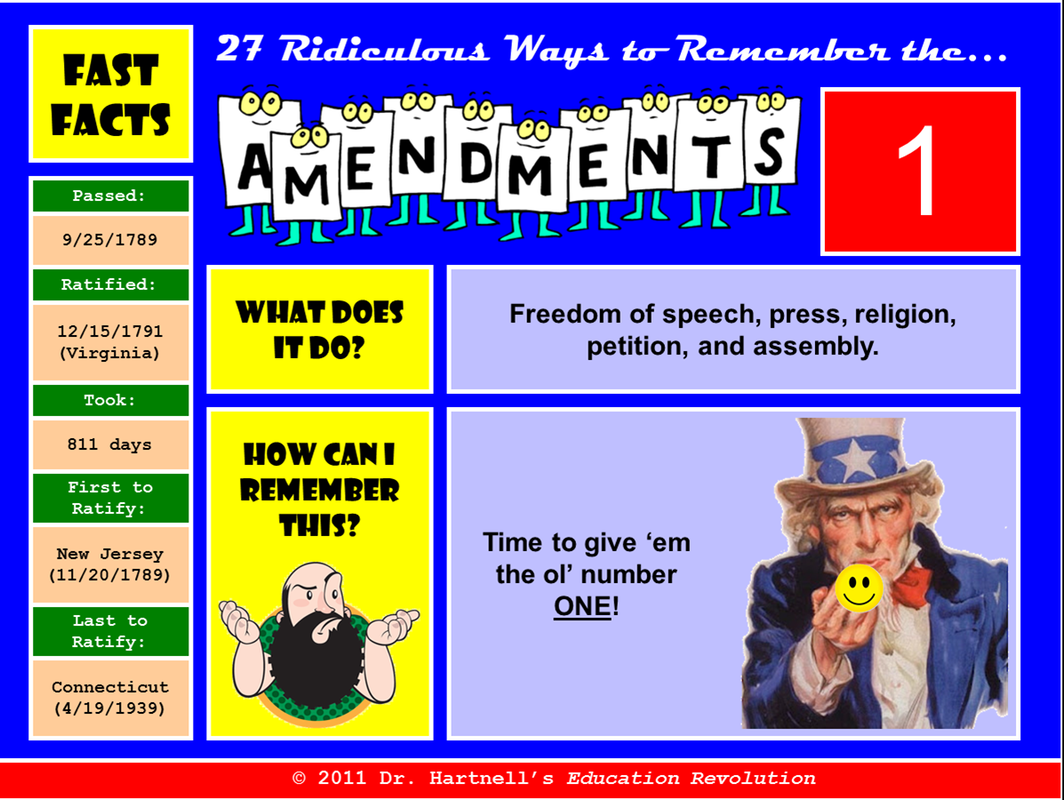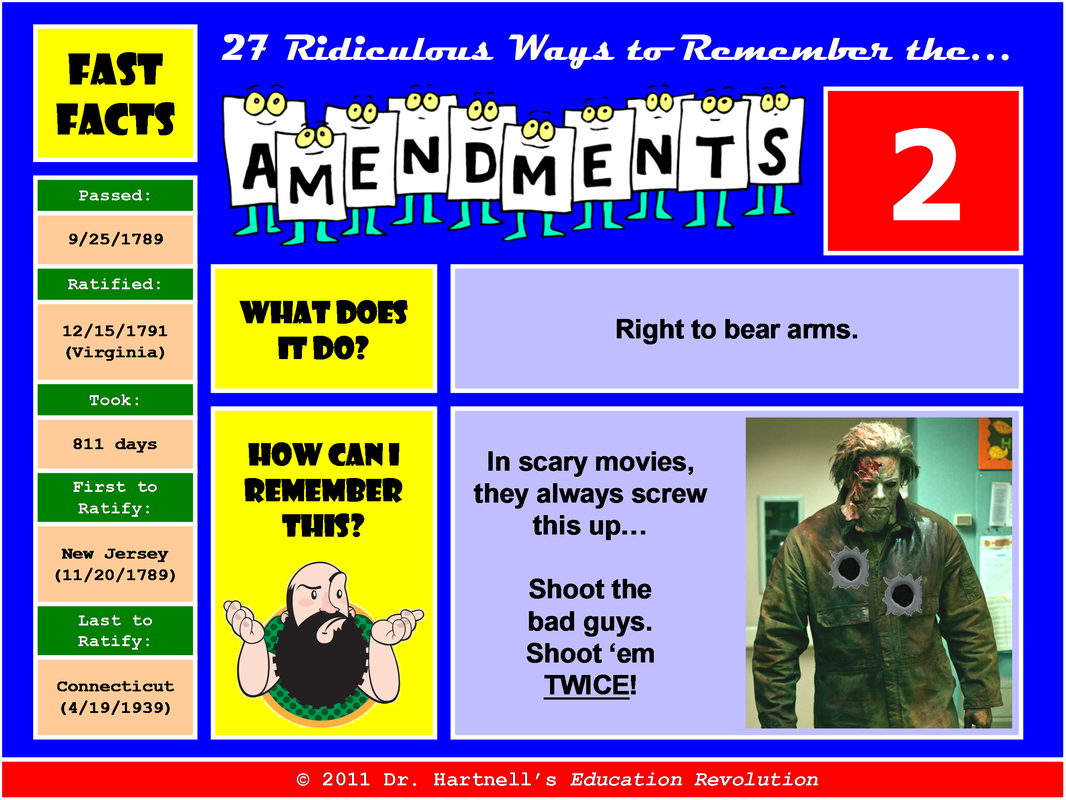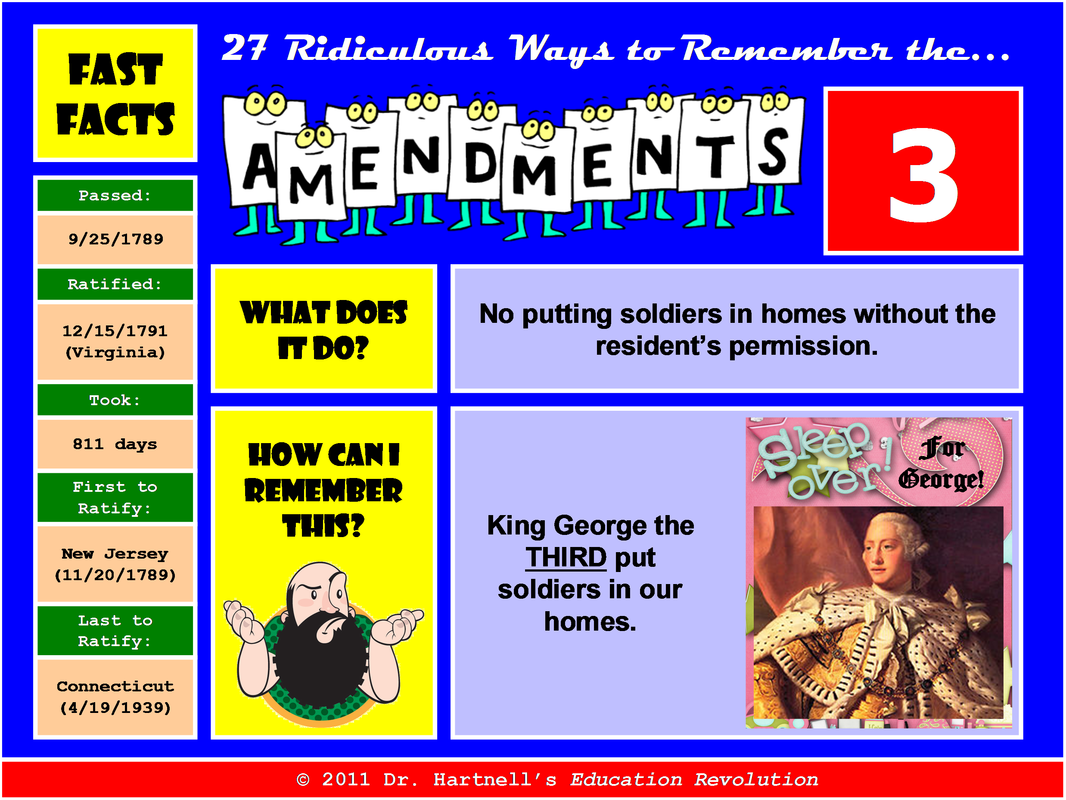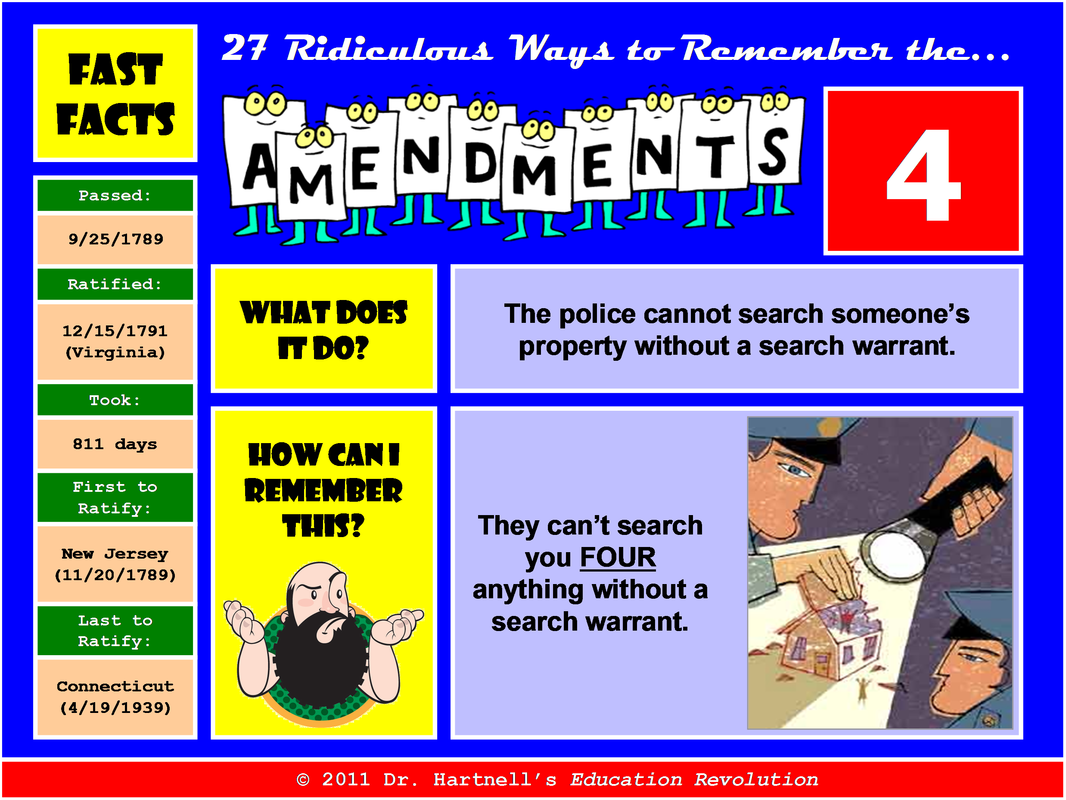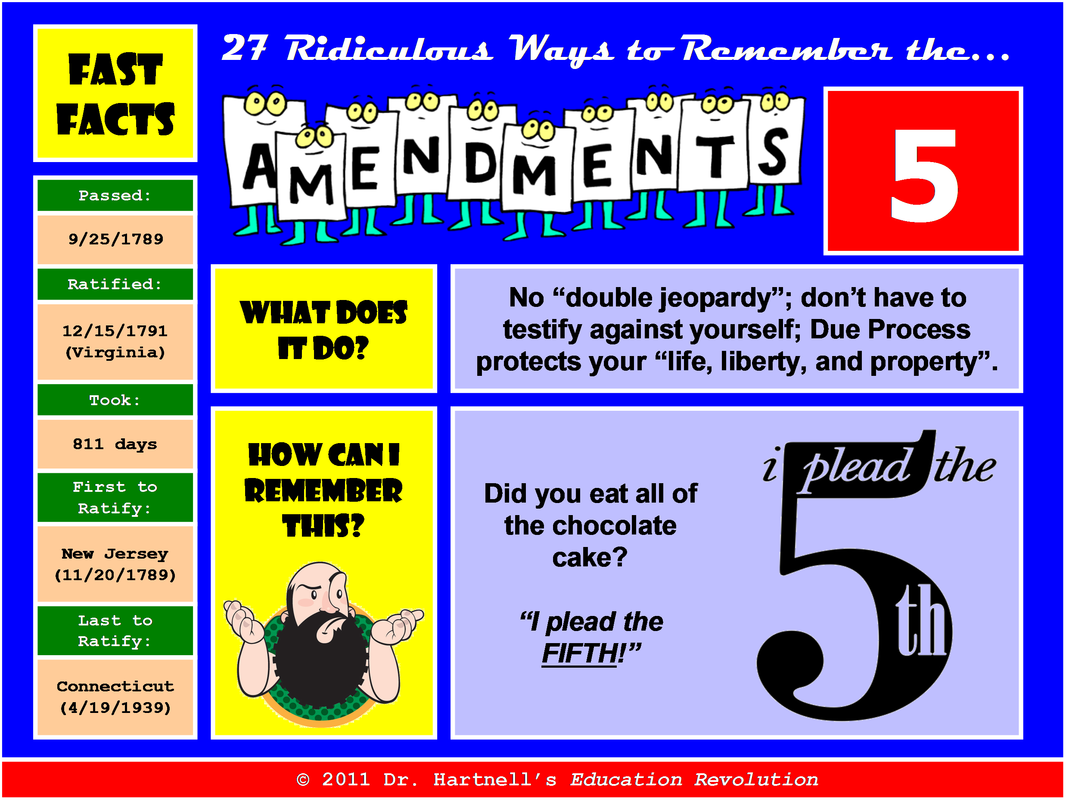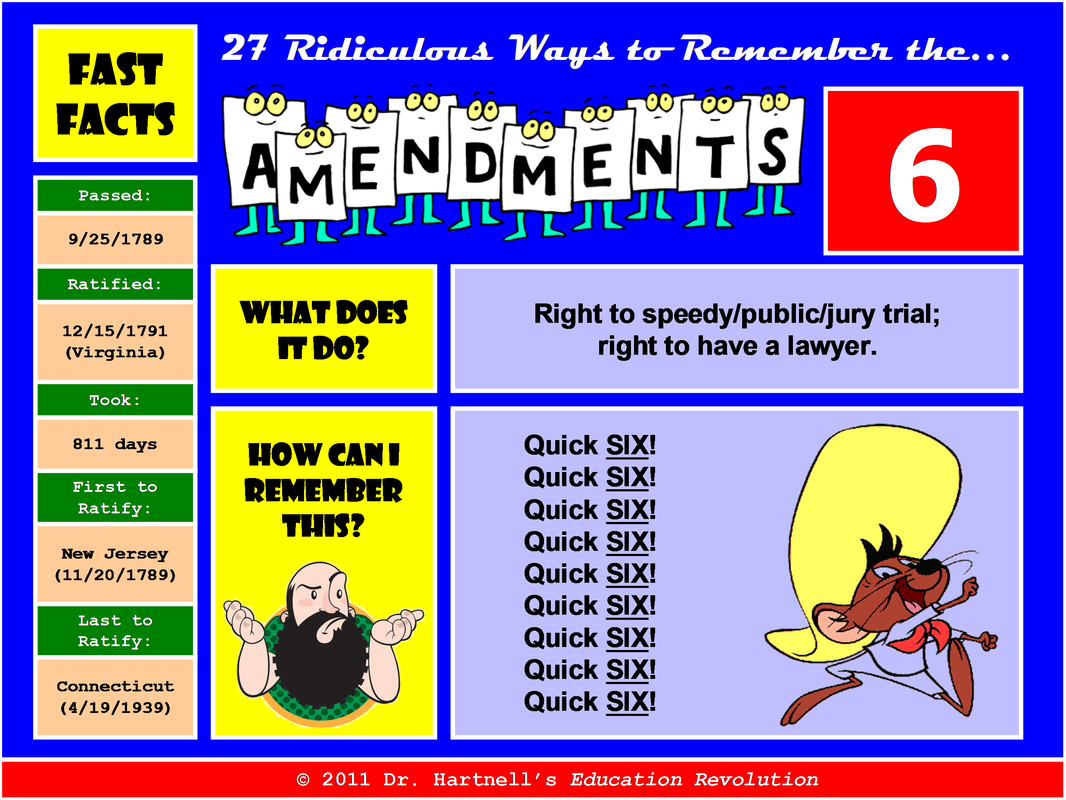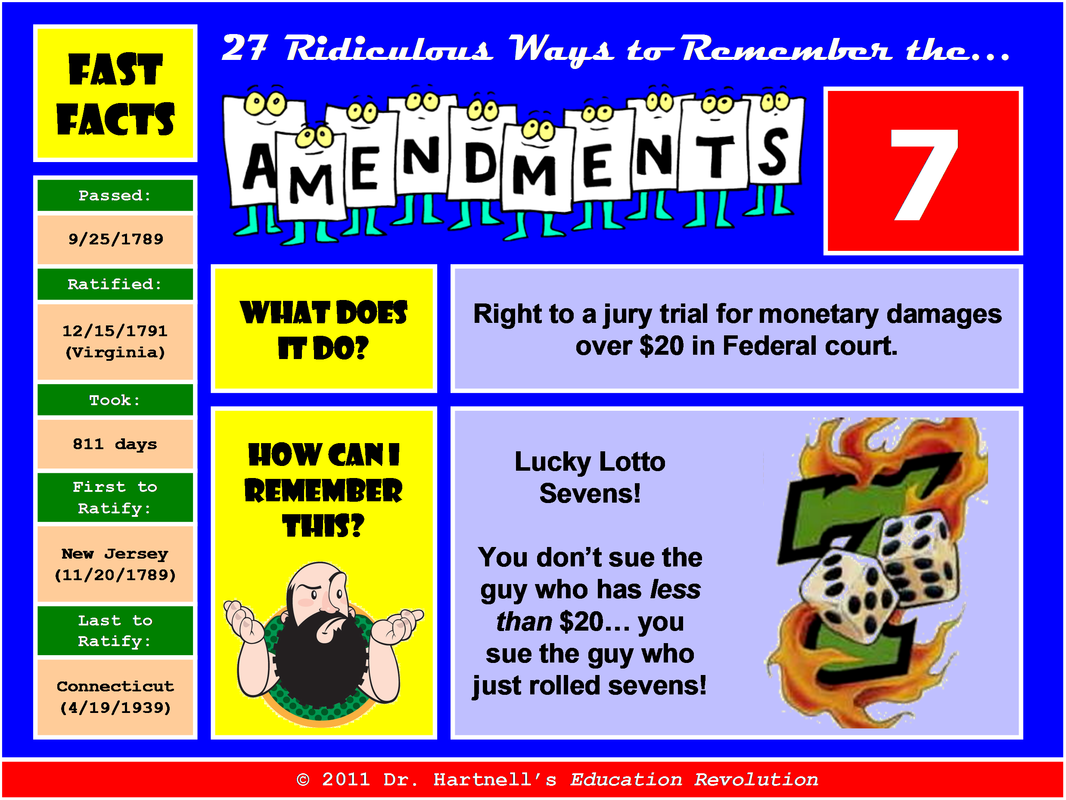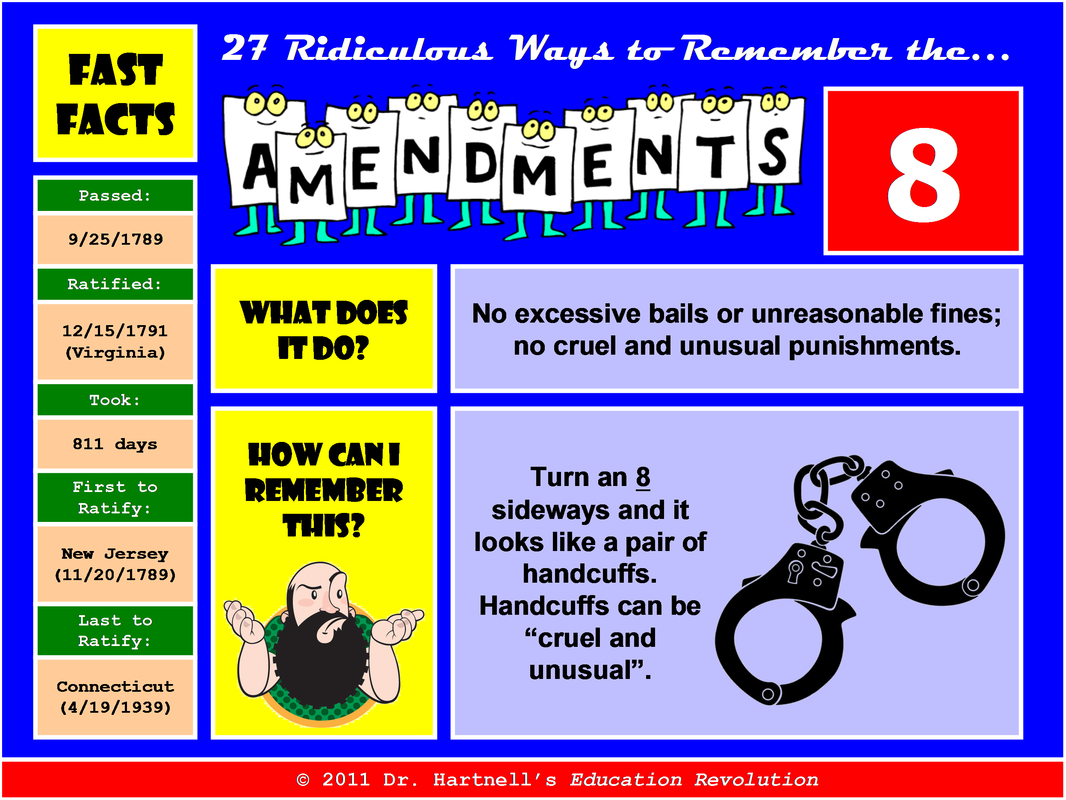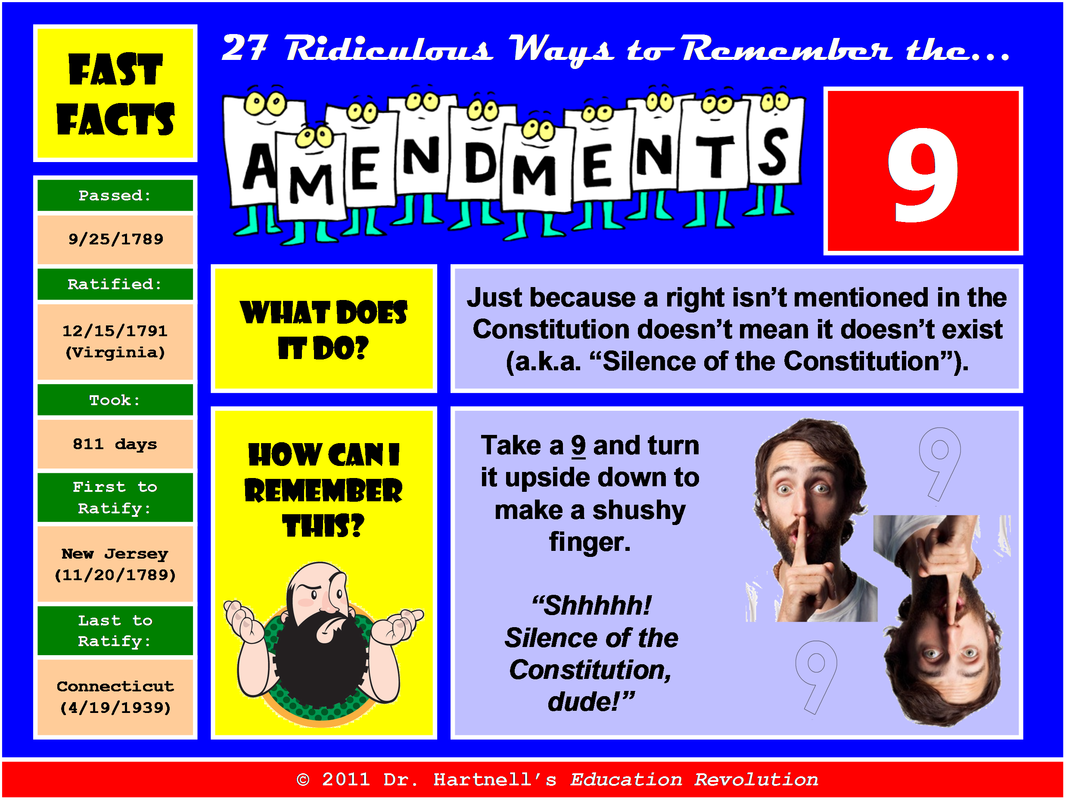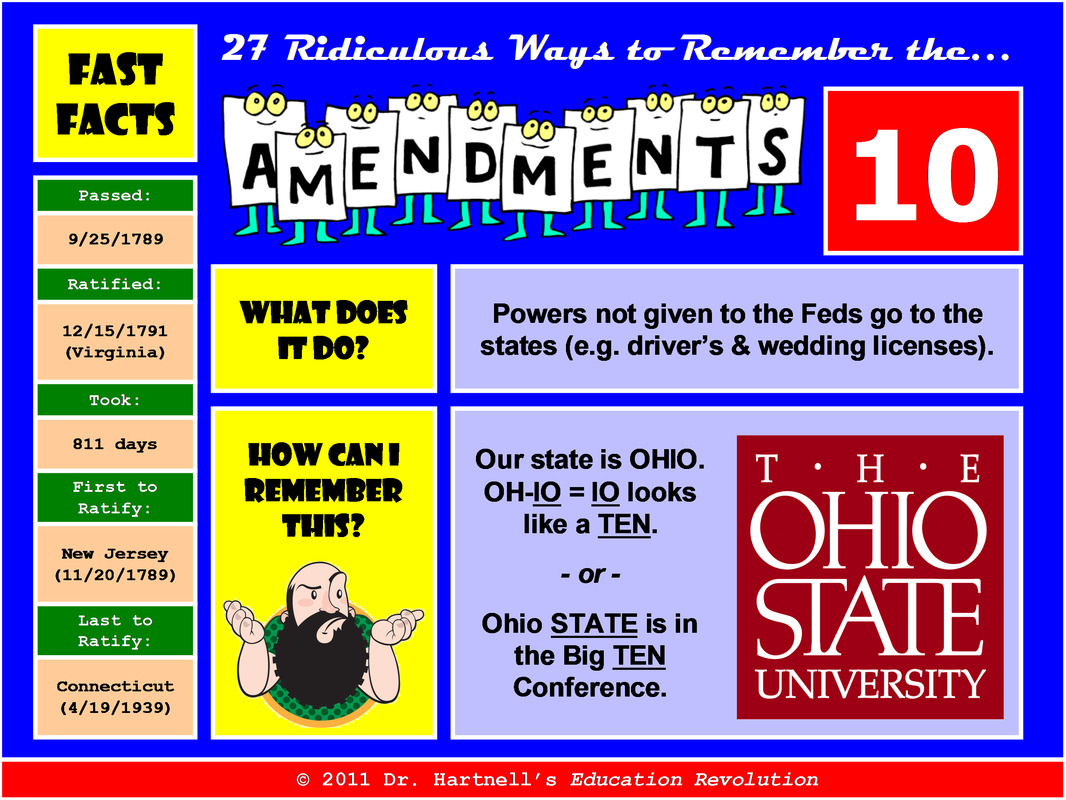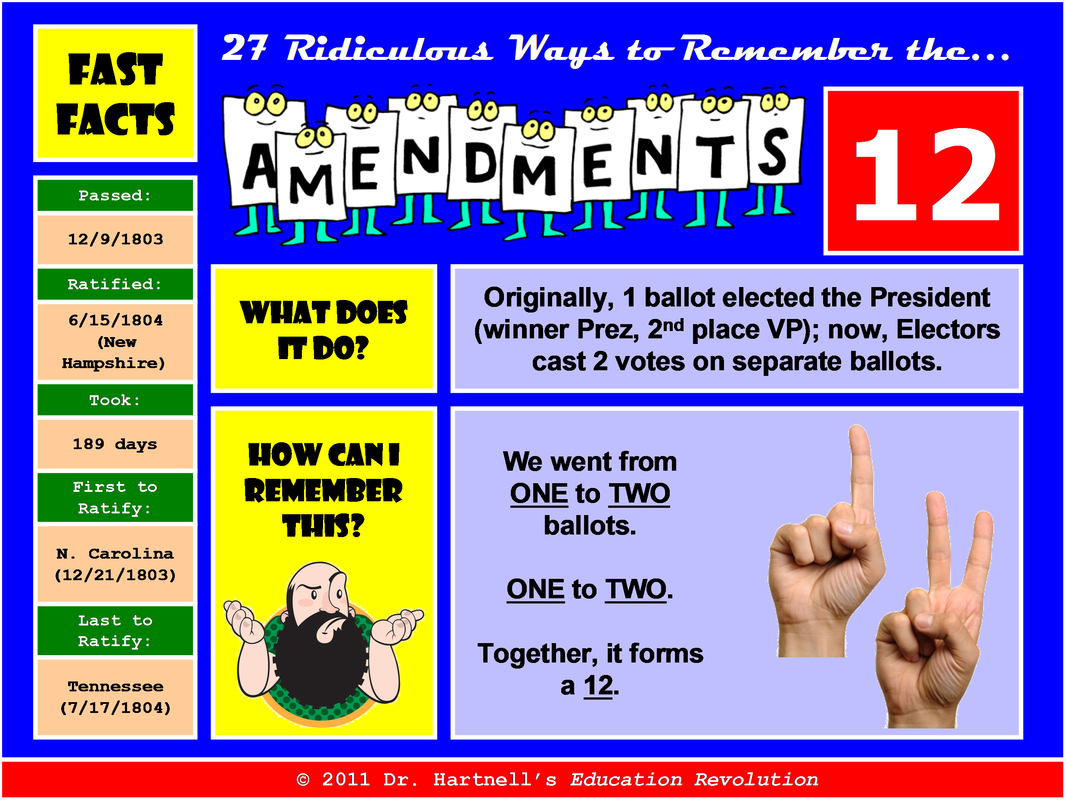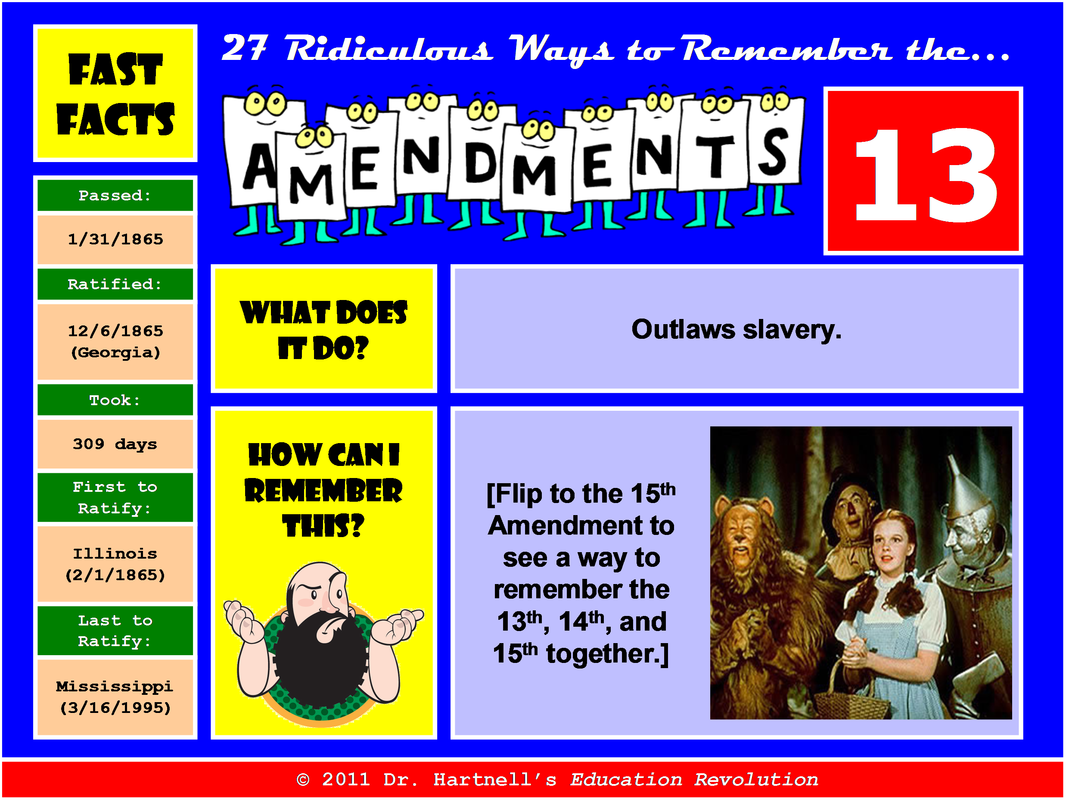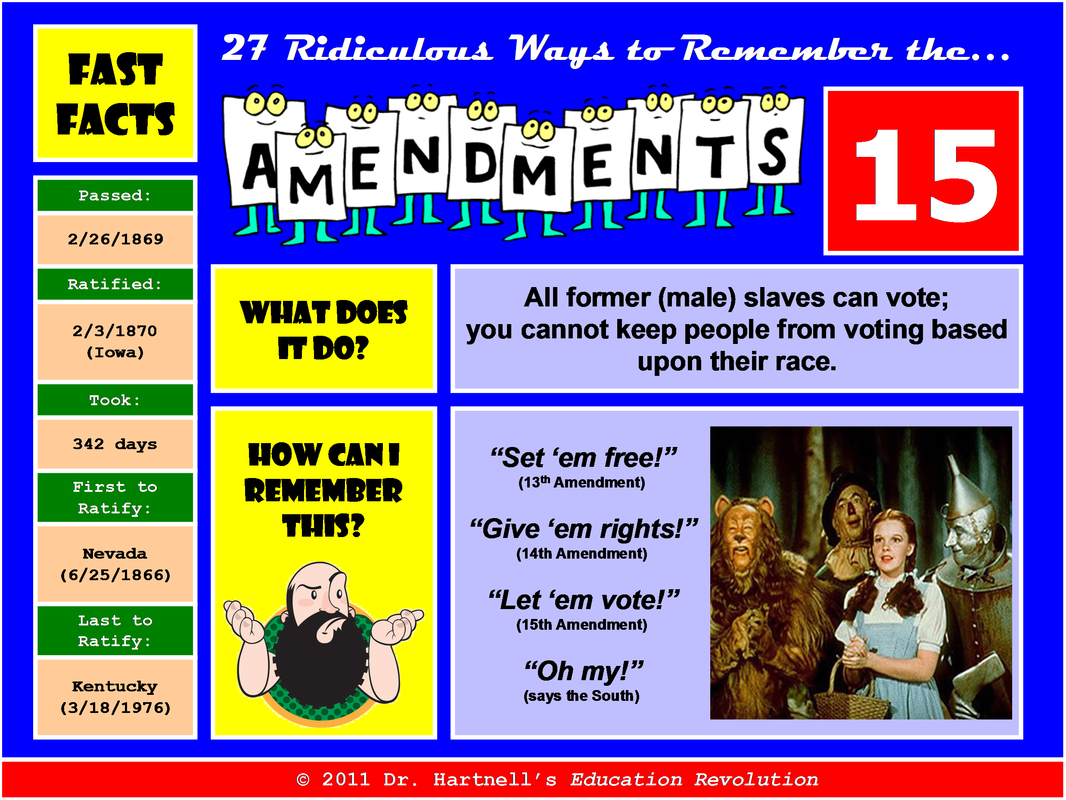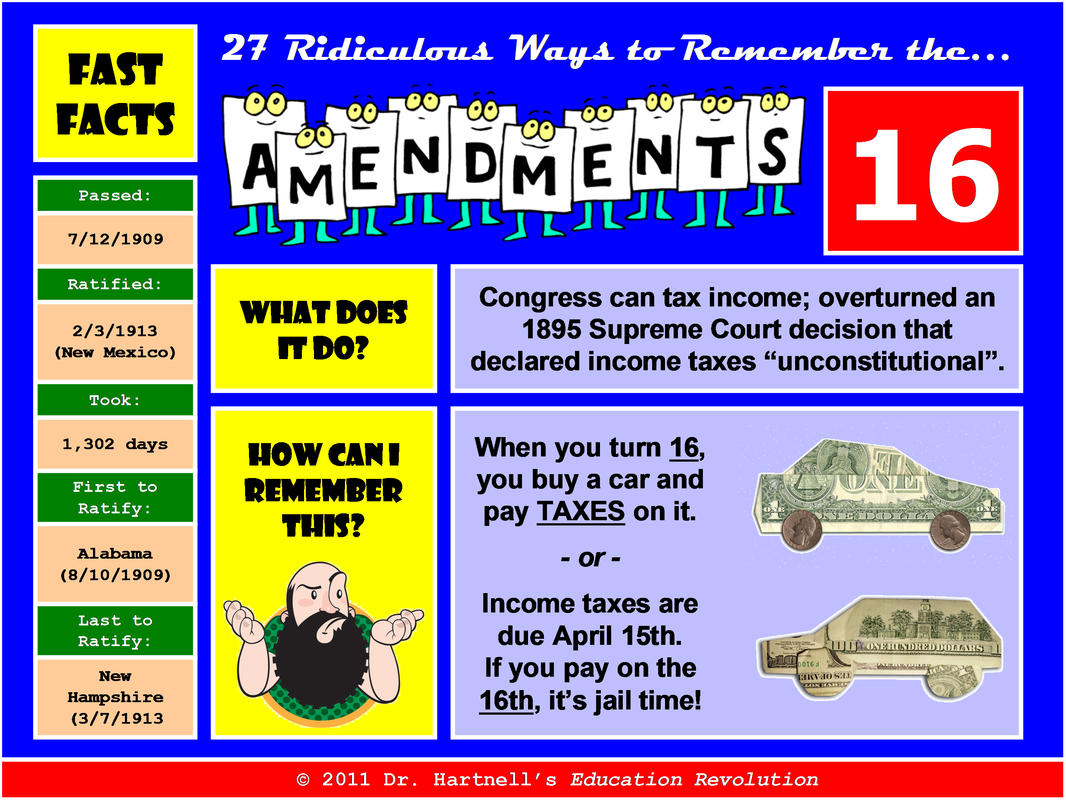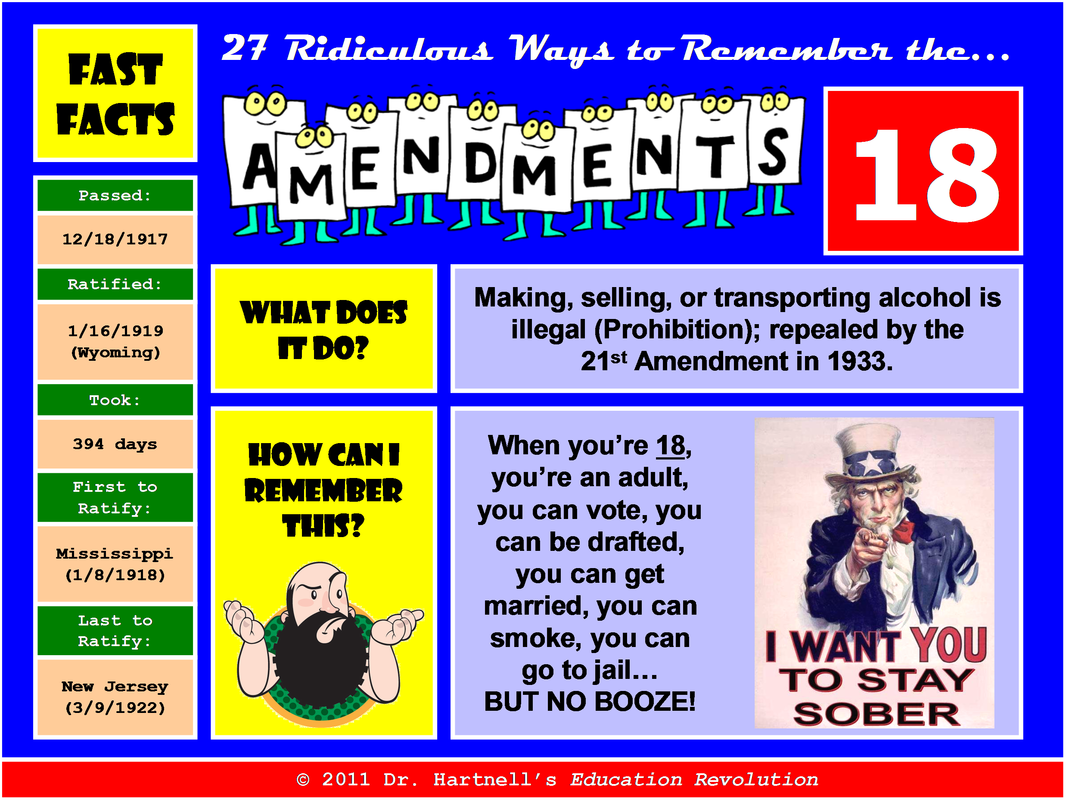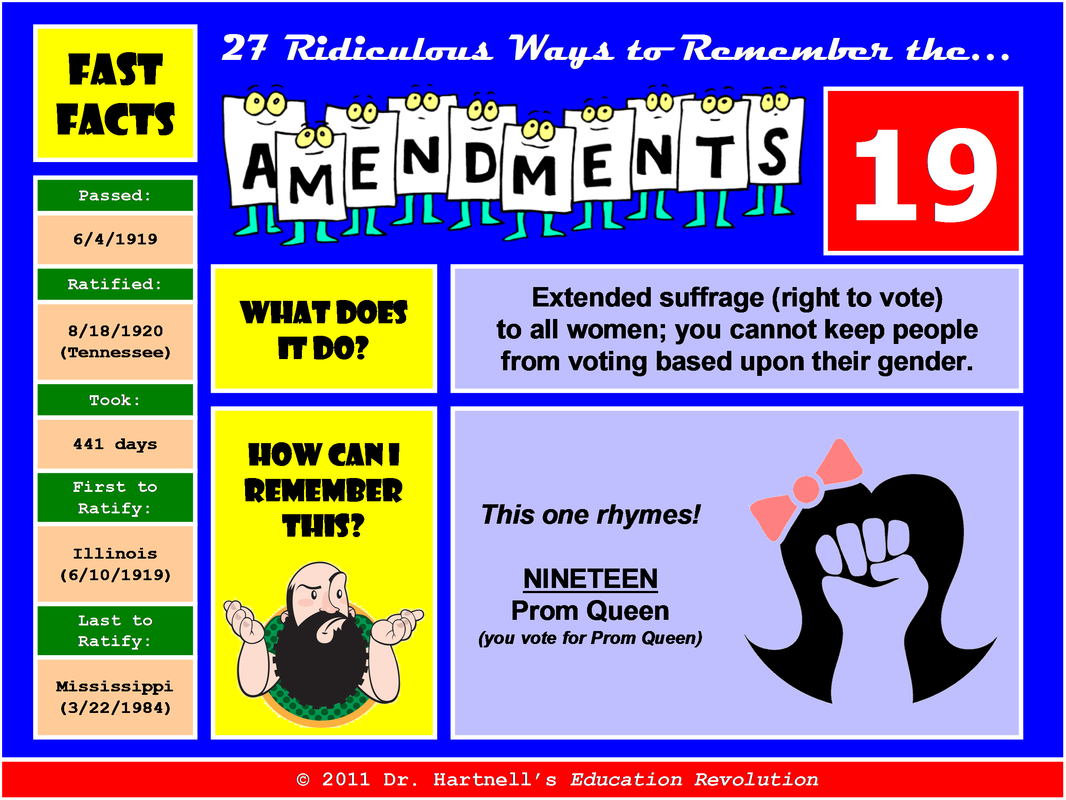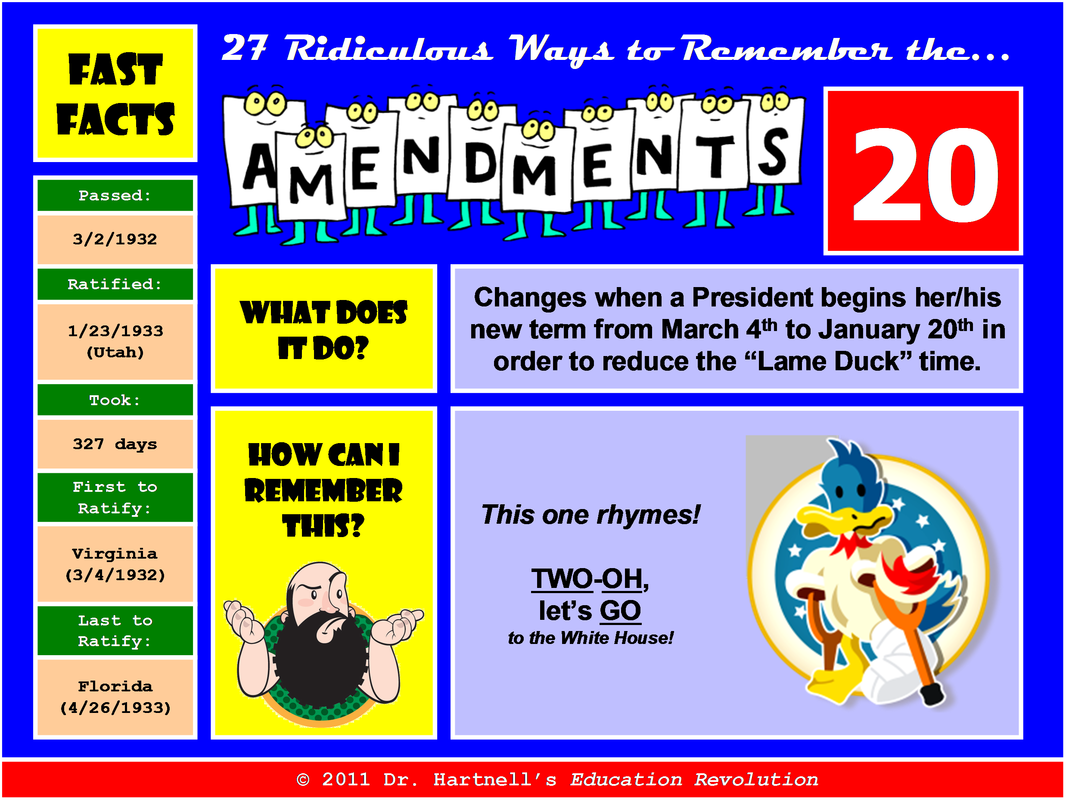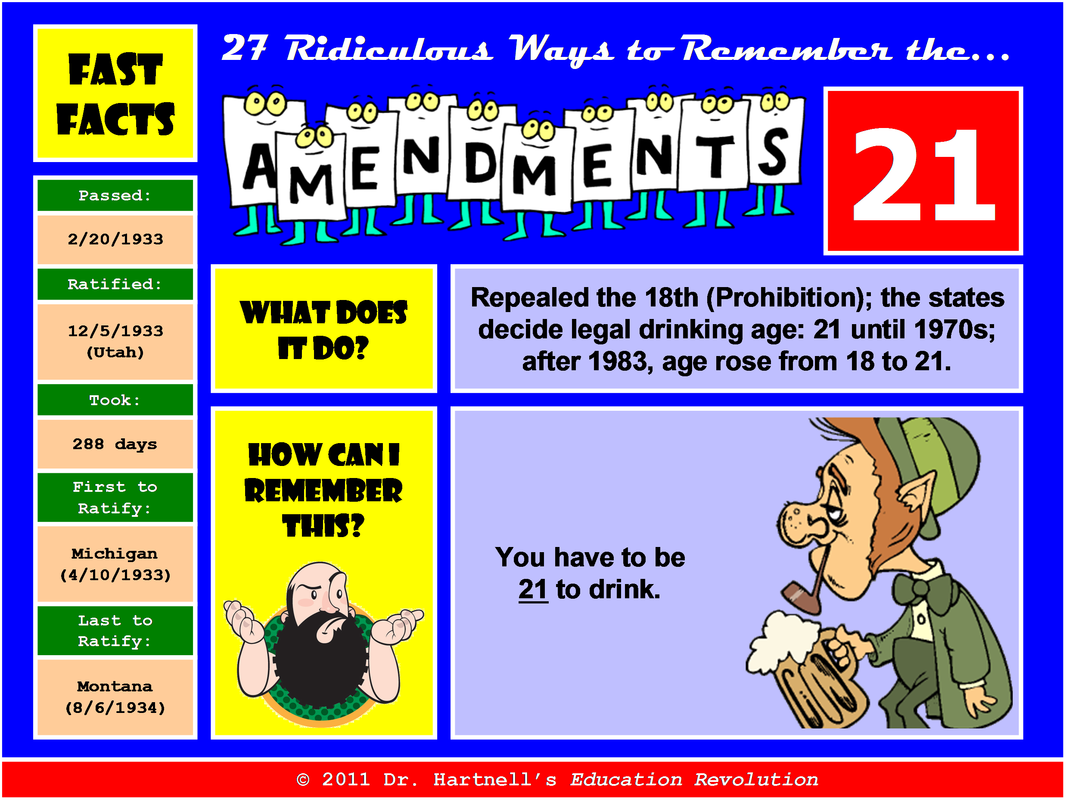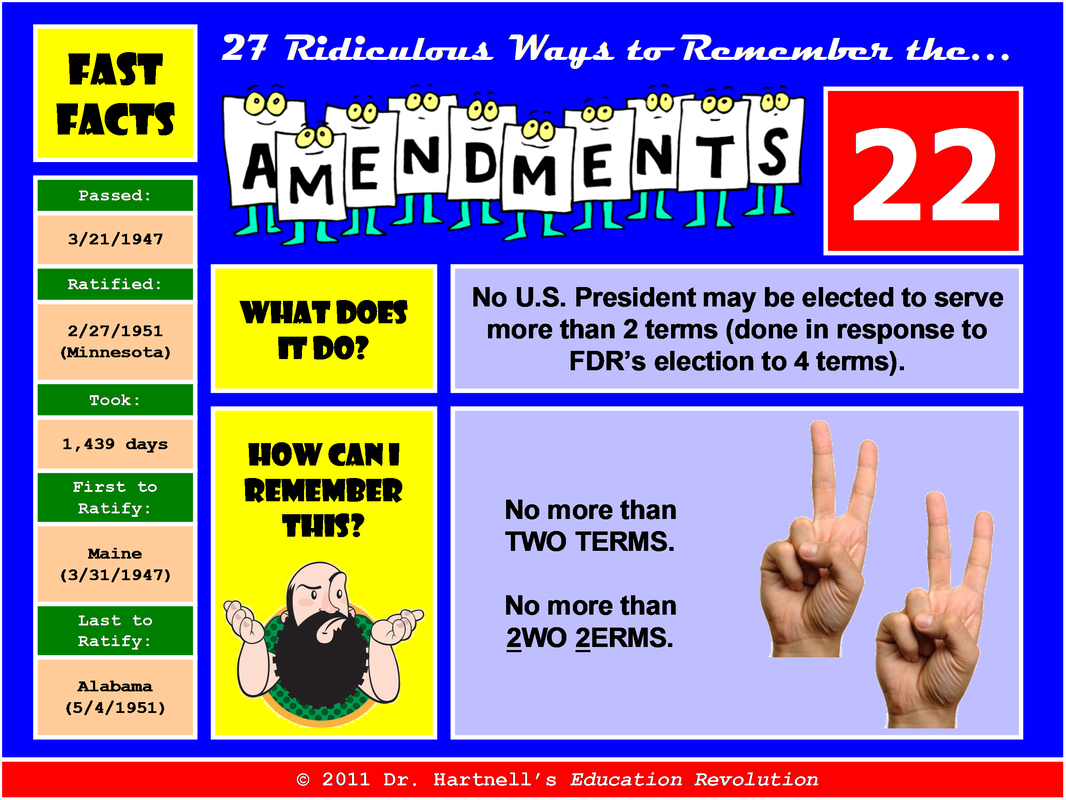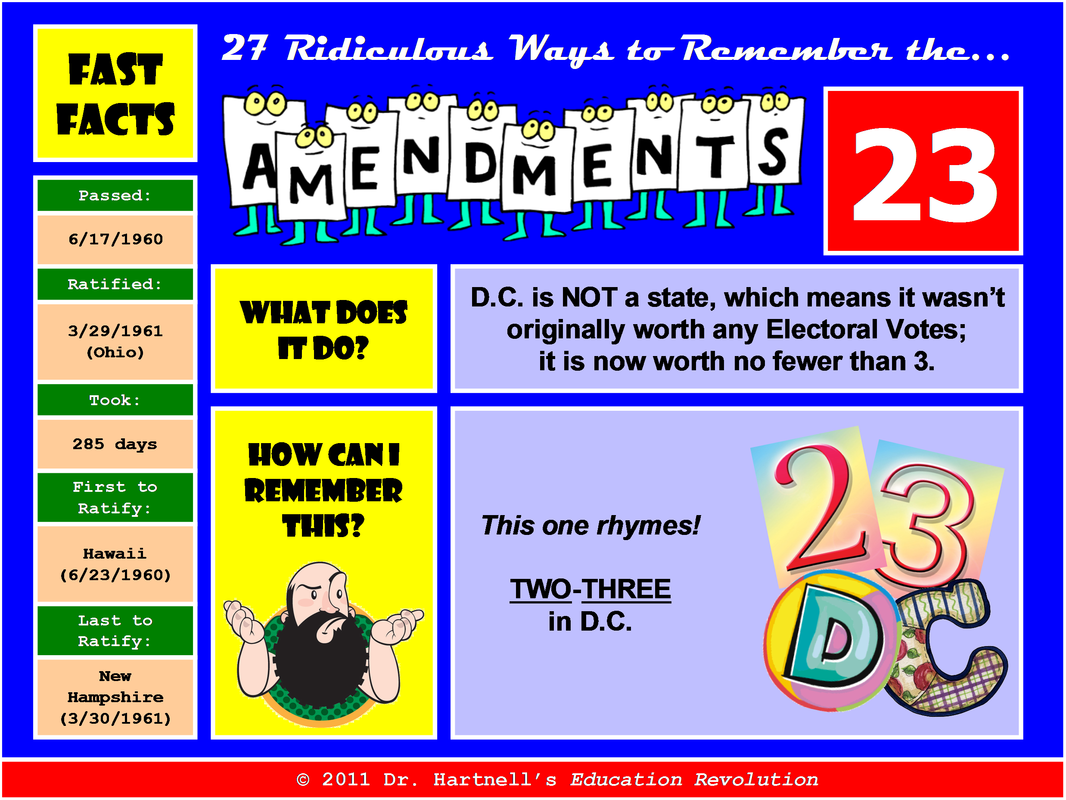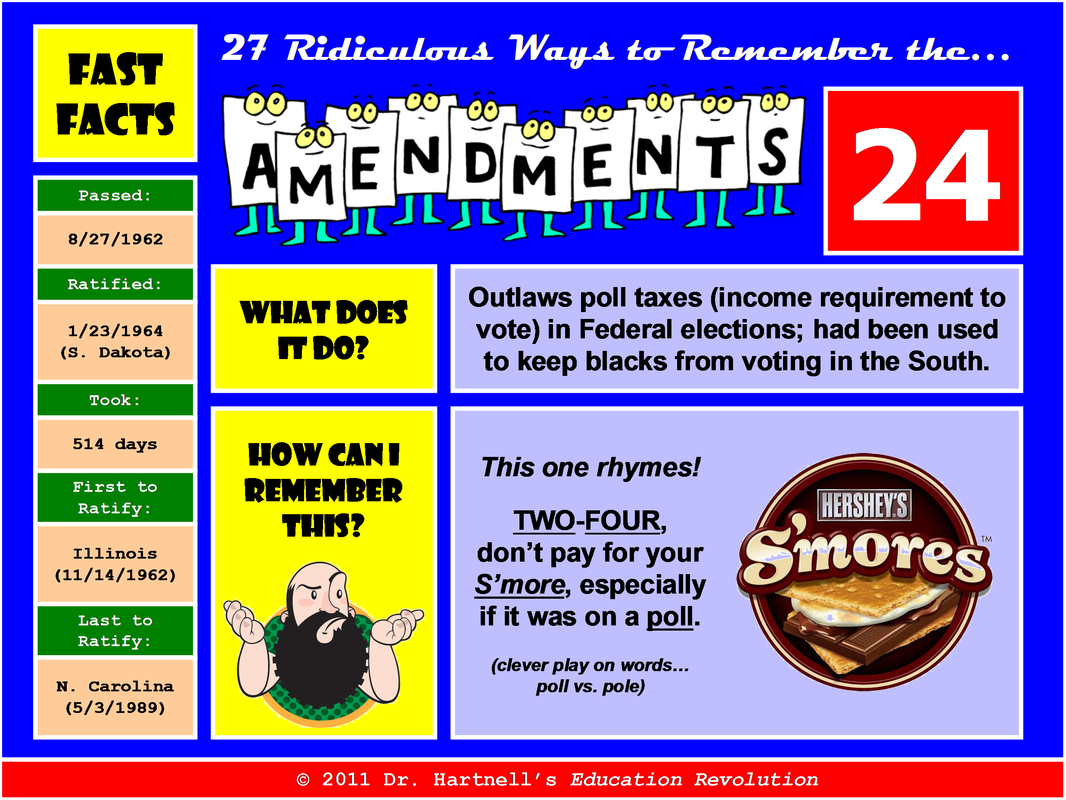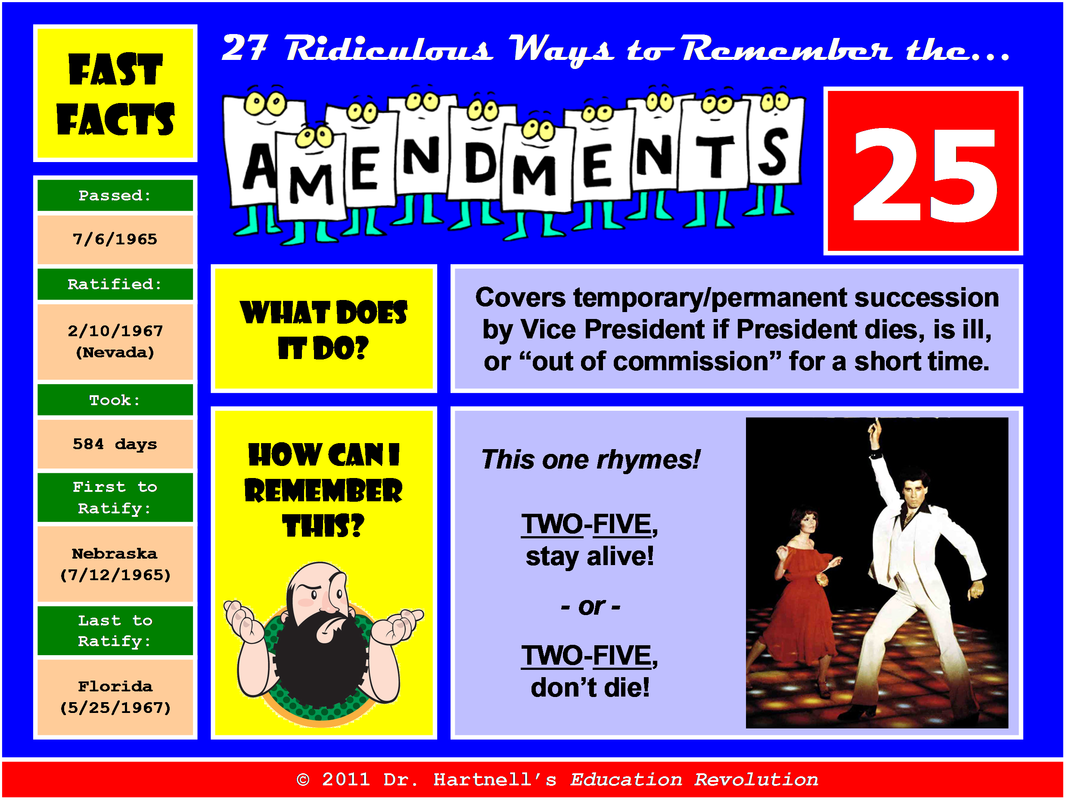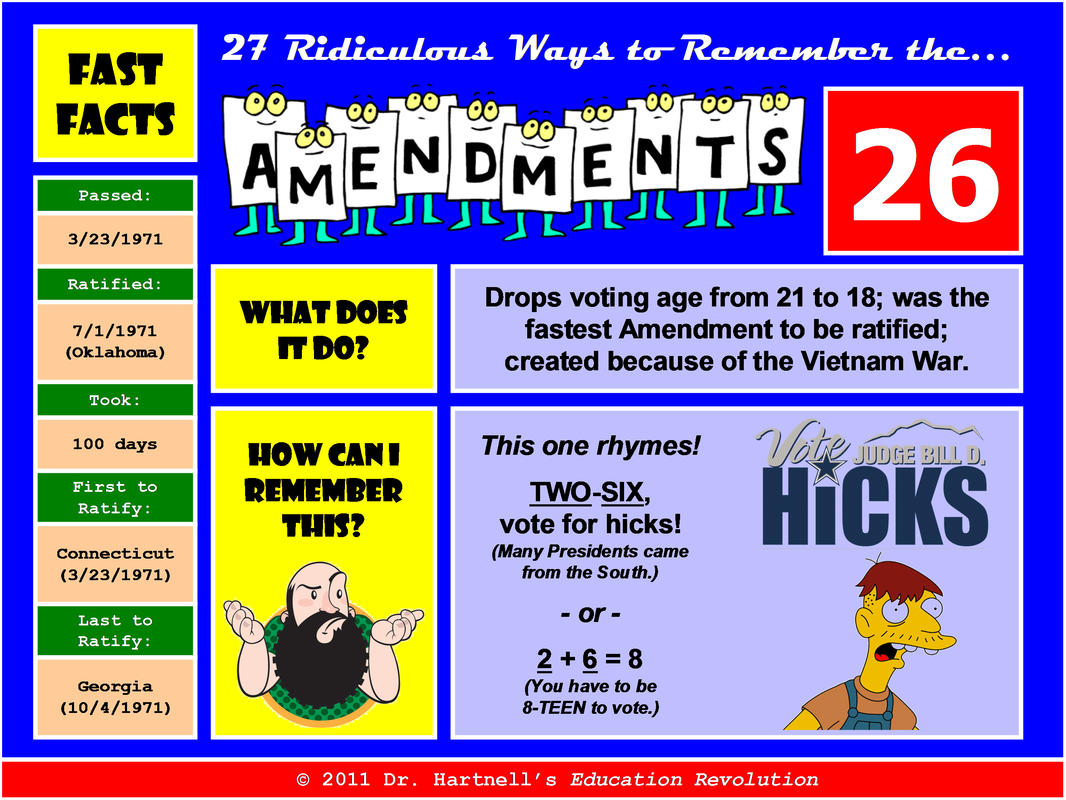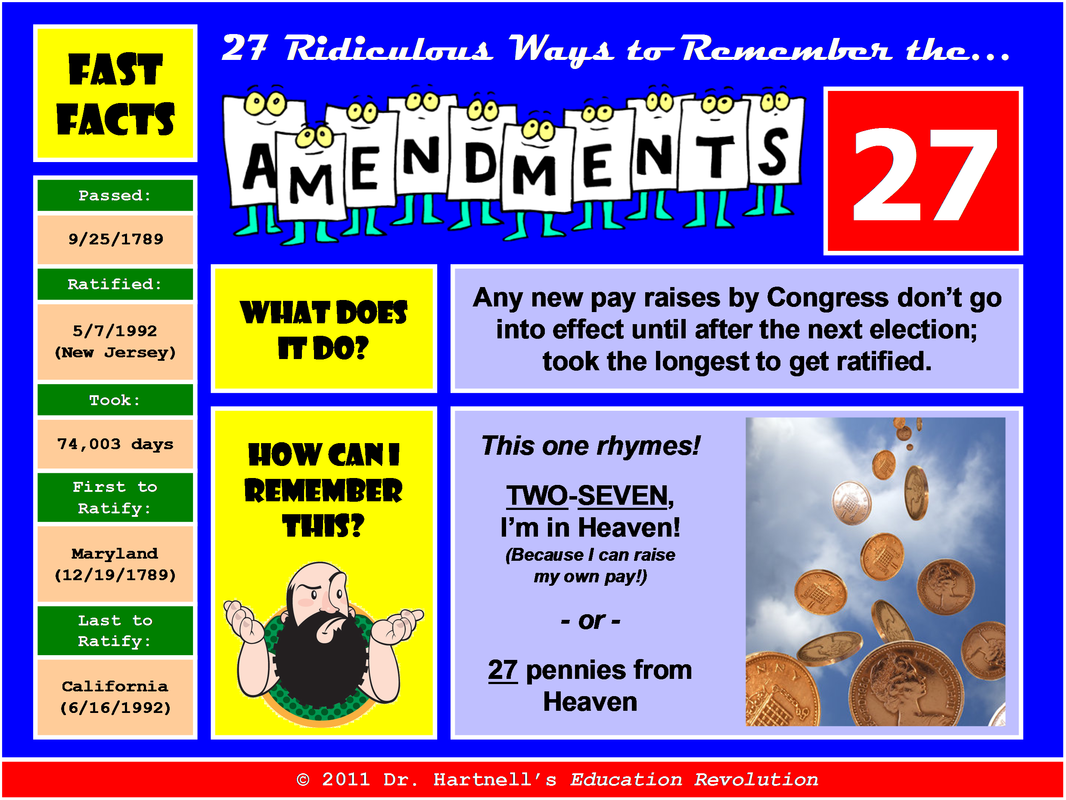Scramblin' thru... the 27 Amendments
Protecting Freedoms since 1791...
Not everything is perfect. Even the Founding Fathers knew the document they were creating was going to need to be flexible enough to adapt and change as the years went by and as America grew up.
An Amendment is the alteration of an existing law. The U.S. Congress has the power to repeal and "tweak" laws. Article V provides the method of "amending" the Constitution. According to this, an Amendment passes after a two-thirds vote of both houses of Congress or after the petition of two-thirds of the state legislatures. An Amendment is ratified by either the legislatures of three-fourths of the states or by special conventions of the people in three-fourths of the states. Once ratified, an Amendment goes into effect across the U.S., even in the states where it hasn't been ratified yet. Amendments are also the only way to overturn decisions made by the U.S. Supreme Court (assuming the Court doesn't reverse its own decision), as was the case with the 16th Amendment.
Since the Constitution was ratified in 1788, it has only needed to be "edited" 27 times. Shoot, that's fewer times than the last paper you wrote for English class! Below you will find "Dr. Hartnell's 27 Ridiculous Ways to Remember the Amendments". Enjoy! |
The "Bill of Rights", which contains the first 10 Amendments to the U.S. Constitution, almost never happened, and, when it did, almost had 17 Amendments.
We owe this to James Madison. His persistence in reminding members of Congress that they had promised the states they would create a list of guaranteed rights if they ratified the Constitution was met with some yawns and some "so whats?" He kept at it, however, and gave his plan to the House of Representatives in June 1789. Madison thought the Bill of Rights should be written into the original Constitution rather than offered as a separate entity. The House appointed Madison, Roger Sherman, and John Jay to draft a "Bill of Rights". Sherman favored a separate document, and his suggestion was chosen over Madison's inclusion plan. After much debate, the House passed 17 proposed amendments. The Senate combined some Amendments and cut others, dropping the total number to 12, which they approved on September 25, 1789. Per the wording of the Constitution itself, three-fourths of the states must approve any amendments to the Constitution. With Vermont becoming the 14th state in 1791, 11 states were required to approve adding the Bill of Rights to the Constitution. Virginia became the 11th to do so on December 15, 1791. (Does Hallmark have a "Happy Bill of Rights Day"card?) Most states did not ratify the first two amendments of the original 12 in the Bill of Rights. The first dealt with how to go about assigning congressional seats to the states. The second, specifying congressional pay raises, was not ratified until 1992... 74,003 days after it had been passed in 1789... and became the 27th Amendment. Because the first two were passed but not ratified in 1789, what we know today as the First Amendment was actually the Third. |

